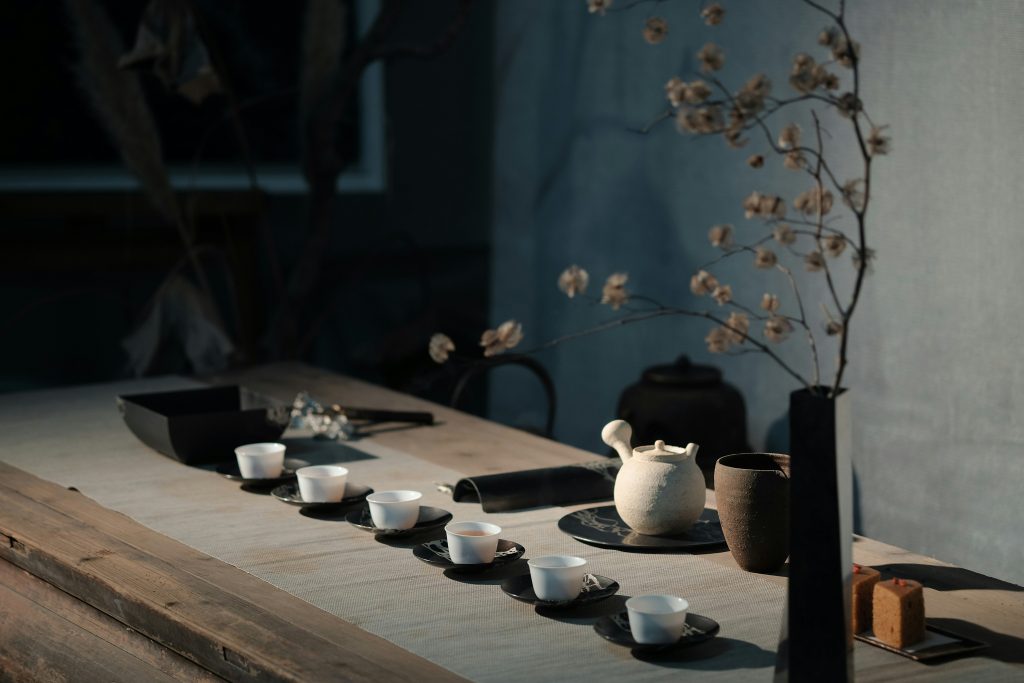
What It Is: A Chinese teahouse (茶馆 cháguǎn or 茶楼 chálóu) in China isn’t just a place to drink tea – it’s a whole social and cultural experience. Chinese teahouses are spaces where people gather to relax, chat, play games, and of course enjoy wonderful tea. Each region has its own style of teahouse, but they all center around the simple pleasure of whiling away time over a pot of tea. For travelers, visiting a local teahouse is a gentle way to dip into Chinese daily life and wellness, because the act of sipping tea slowly is itself a form of mindful relaxation deeply ingrained in Chinese culture.
Underlying Idea: China has a saying: “Firewood, rice, oil, salt, sauce, vinegar, tea – the seven necessities of daily life,” and tea is the only one you savor. Tea culture in China goes back millennia, tied into philosophies of Confucian clarity, Daoist harmony, and Buddhist serenity. Drinking tea isn’t just to quench thirst; it’s about nurturing a calm and clear state of mind. A famous Chinese poet Lu Yu even wrote a classic on tea, treating its preparation as a refined art. In everyday terms, a teahouse functions as a “third space” (outside of home and work) where people maintain social connections and mental well-being. Especially in places like Sichuan, teahouses are viewed as the living room of the community, a “court of civilians” where gossip flows as freely as tea. The underlying wellness principle: taking time to relax, chat with friends, and enjoy a natural brew is vital for a balanced, happy life.
The Experience: Step into a Chinese teahouse and you may be greeted by the earthy scent of tea and the sight of patrons at wooden or bamboo tables, small porcelain cups in hand. In a traditional teahouse (like those in Chengdu), you’ll likely hear the clack of mahjong tiles or see folks playing cards. You’ll pick a tea from a menu – common choices are green teas (like Dragon Well or Biluochun), oolong teas, pu-erh (fermented dark tea), or jasmine-scented tea. The server will often bring a lidded cup (盖碗 gàiwǎn) or a clay teapot with hot water and a generous amount of tea leaves. Don’t be shy if you’re not sure how to handle the gear – watch others or ask the staff; they’ll happily show you how to use the lid of the bowl to sweep away leaves as you sip. The atmosphere encourages lingering. Typically, you pay for the first pot and refills of hot water are free and unlimited – you can sit there all afternoon nursing the same leaves, as is quite normal. As you settle in, absorb the ambiance: maybe there’s a gentle clink of cups, soft classical music or even a live Peking opera or Sichuan opera performance on a small stage (some teahouses double as venues for traditional arts). In Chengdu’s teahouses, you might also notice the aforementioned ear cleaners offering their services – yes, you can get your ears cleaned and your tea topped up at the same time! In more modern city teahouses, the vibe might be quieter, almost like a café but with a Chinese twist – think cushioned seats, maybe even Wi-Fi, and patrons quietly reading or having business meetings over tea.
How It Feels: Spending time in a teahouse is soothing and culturally rich. As you take that first sip of hot tea, there’s a moment of serenity – the warmth spreads in your chest, and you just slow down. Tea in China is often brewed light but continuously, so you’re meant to drink it cup after cup, letting the subtle flavors evolve. With each refill, you might notice your mind unwinding. The pace is unhurried – unlike a coffee jolt, tea’s effect is gentle alertness coupled with relaxation. If you’re chatting with locals, you’ll find conversation flows easily in such a laid-back setting. You might strike up a conversation about the tea itself (people love to explain the origin of this or that leaf), or about the chess game happening at the next table. In a lively teahouse, even just people-watching is a delight: elderly friends debating politics, a young couple quietly enjoying a date, a group of middle-aged folks laughing over memories. The sense of community can be palpable – many patrons are regulars who treat the teahouse as a second home. As a traveler, you may feel like you stepped back in time or into a scene from a Chinese painting, especially in historic teahouses with ornate wooden lattice and calligraphy on the walls. By the time you leave, you’re likely to feel refreshed yet calm, caffeinated yet centered. That’s the magic of Chinese tea: it sharpens the senses but also brings inner peace.
Benefits: Tea itself has numerous health benefits – antioxidants from green tea, digestion aid from pu-erh, calming properties from herbal teas like chrysanthemum. But beyond the biochemical, the act of sitting and sipping is a form of meditation and social therapy. You give yourself a break, you connect with others or with your own thoughts. Many Chinese credit their daily tea habit (and the mini pause it enforces) with reducing stress and maintaining mental balance. In a teahouse context, you’re also often enjoying nature – some teahouses have lovely gardens or are set in parks by lakes (like some in Hangzhou by the West Lake). This reconnects you with the outdoors, further soothing the soul. Immersing in tea culture can give you insight into why Chinese lifestyle has a certain rhythm of work and rest. You might carry that lesson home: to incorporate small tea breaks in your day for wellness.
Where to Try: Virtually everywhere in China you can find a form of teahouse, but each region has its specialty. For the most iconic experience, Chengdu, Sichuan is unparalleled. It’s said Chengdu has more teahouses than sunny days. Try Heming Teahouse in People’s Park or Shunxing Old Teahouse – bamboo chairs, jasmine tea, and possibly a face-changing opera show in the evenings. In Hangzhou, known for its Longjing (Dragon Well) green tea, you can visit tea farms and also sit in teahouses overlooking West Lake – enjoying the scenery as much as the brew. Beijing has some famous old teahouses like Lao She Teahouse, which combine tea with cultural performances (though those cater more to tourists). For a rustic vibe, in Guangzhou (Canton), early mornings see locals at dim sum restaurants which double as teahouses (the term “饮早茶” – “drink morning tea” – means having a dim sum brunch with tea). There you can taste fragrant oolong or pu-erh with your dumplings. If you’re in smaller towns, just ask where people go to drink tea – you might be invited into someone’s home for a tea session! Wherever you go, embrace the moment: order a pot, sit back, and let time steep along with the leaves. In a country always racing to modernize, the teahouse remains an oasis of unhurried enjoyment – a testament to the Chinese art of nurturing wellness in everyday life.
